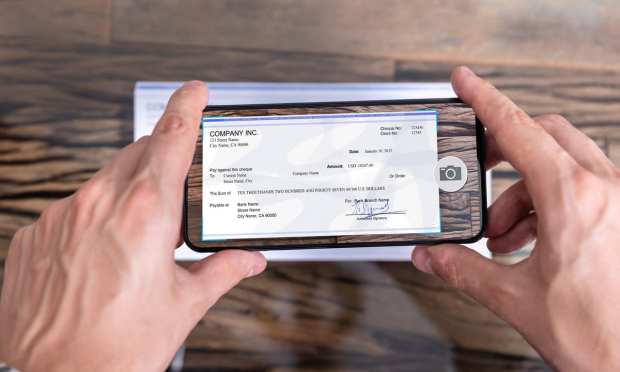PSCU: Digital Banking Helps Credit Unions Compete With Larger Banks

The pandemic is reshaping banking.
In an interview with PYMNTS, Jeremiah Lotz, managing vice president, digital experience and payment products at PSCU, said the increasing use of analytic technology, mobile banking and platform models can help credit unions (CUs) anticipate the financial needs of their members — and even compete more effectively with larger banks in the process.
The conversation came against a backdrop where, as noted in a recent PYMNTS Tracker, a majority of Americans did their banking online last year. And of course, in the age of COVID-19, they’ve continued to do so with increasing frequency.
As more banking has shifted online, an increasing amount of that online activity is occurring across mobile conduits. Lotz told PYMNTS that the shift is spread widely across various demographics.
“Generationally, we’re seeing individuals who maybe weren’t accessing their card accounts or their banking accounts on a regular basis through digital,” he said. In other words, people who had been looking at account data online occasionally or making payments by check are now gravitating toward more self-service options.
Getting Customers Used To More Self-Service
An example of that self-service pivot lies with credit card transactions — specifically, disputes.
Lotz offered a hypothetical situation where a cardholder might have been charged twice by a merchant or charged a different amount than expected. He said more such disputes are going through self-service flows, as “consumers are becoming more comfortable and more aware of what capabilities are there.”
In addition, consumers are ramping up their use of digital payments, opting to use mobile wallet functions to make transactions tied to their accounts. That adoption might be seeing a tailwind from merchants themselves even as brick-and-mortar locations reopen, as there’s a natural aversion these days to touching in-store equipment such as POS terminals, given the pandemic environment.
By contrast, consumers inherently trust their own smartphones or other devices. They know where those mobile phones have been — usually on their respective persons.
CUs Must Educate Members On What’s Available
To get self-service behavior firmly entrenched — and cement consumers’ relationships with CUs — educational efforts are critical, Lotz said. For instance, credit unions must alert users of what’s available and how it can streamline their financial lives.
“One of the things we have seen recently — again, driven by the pandemic — is a reinvigoration of communication and education by financial institutions (FIs),” he noted.
Those educational efforts have been driven in part by necessity, as customers have been unable to come into branches. Credit unions have had to reach out with messaging to walk consumers through new ways of using their accounts, taking advantage of various digital financial offerings or understanding how CUs have been protecting financial data.
But Lotz said consumers must be proactive about battling would-be fraudsters by setting alerts and controls on their accounts. “Safety and security have been part of the drivers and [provide] the opportunity to re-educate the membership base,” he said.
Convenience matters, too. For instance, Lotz said CUs can alert members about places they can go (including locations other than branches) to conduct banking either in-person or digitally.
Digital-first experiences can be of particular value for both members and CUs depending on the life stages in which individuals find themselves. Lotz noted that adding value can tie back to analytics and gaining a holistic view of the member in order to make more informed decisions and tailor offerings.
“It’s important to have a platform through which to collect and deliver that information,” he said. “I might be able to analyze your transaction or your account information, how often you transact and what you’ve opened and what balances are in place. And I might be able to identify through an analytics platform … what [you] might be doing next.”
Lotz noted that visibility is the key to predictability — and is key to reaching out to members without being intrusive. For instance, tech-driven insights can show that a member who is finished paying down a six-year car loan might be ready to upgrade to a new car — and an offer of new financing.
Similarly, a member who has been in the process of opening an account can be offered a digital card by his or her CU that can be pushed directly to a mobile wallet for immediate use. That beats physical cards, which can take three or four days to show up via regular mail.
“Let’s put that card in your hand [and] let’s give you direct access to it,” Lotz said.
He said that continuum of service can help CUs reclaim some of the personal touch that has been the hallmark of the industry, fostering trust between credit unions and their members.
Competitive Advantages
Digitization also allows CUs to compete more effectively with traditional, larger FIs that have relatively stronger capital positions to invest in new products and services.
To counter banks’ inherent capital advantages, CUs can link with FinTechs to address members’ needs on a case-by-case basis, Lotz said.
“That’s what the pandemic has also been able to give us in the credit union space: the opportunity to really analyze and ask, ‘how do consumers and members as a whole interact in a given space, and how do CUs ultimately take advantage of that?’” he said.
Done well, that type of analysis and proactivity can ensure good, consumer-focused experiences across digital and in-person settings, Lotz noted.
“It means that you want to invite members into your branch for something that’s of even more value than their typical in-person interaction pre-pandemic,” he told PYMNTS. “And now they’re going to be excited about some of these capabilities. They can do it all much more conveniently because of the CU’s investment in that digital space.”
